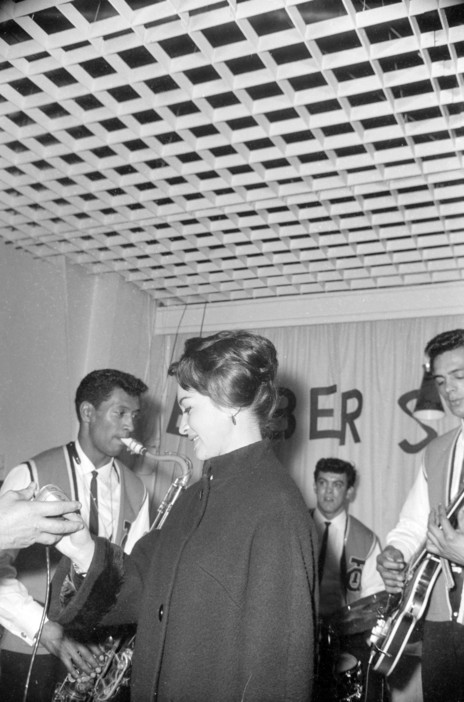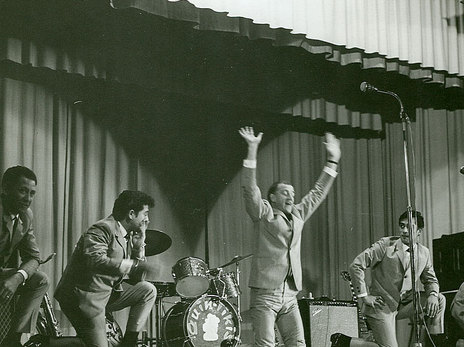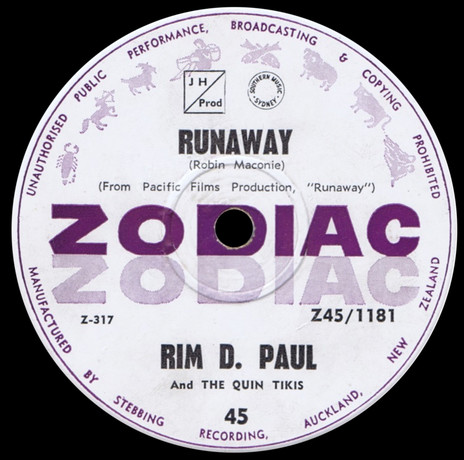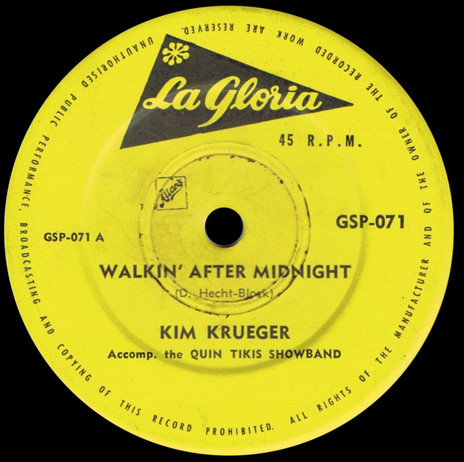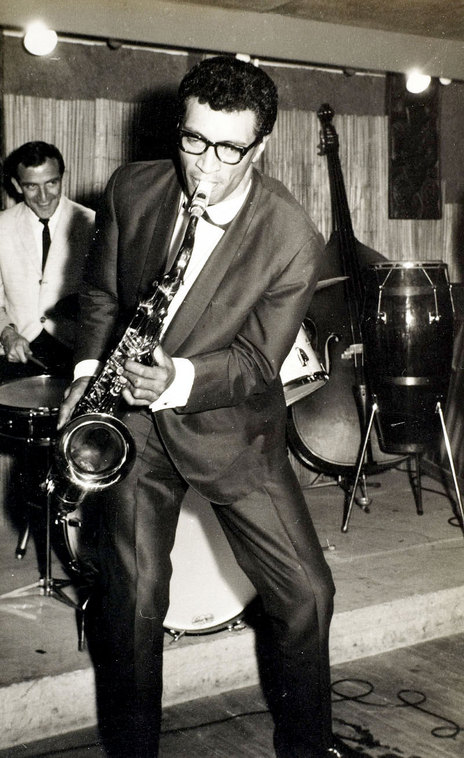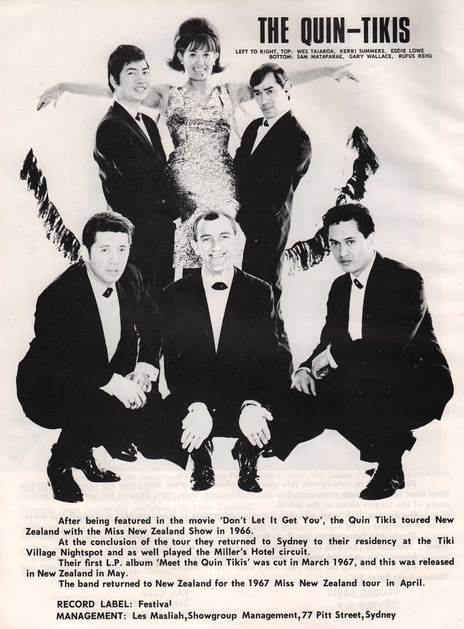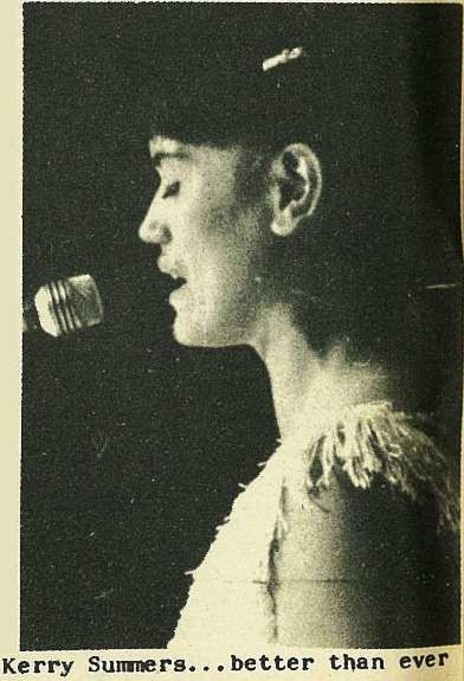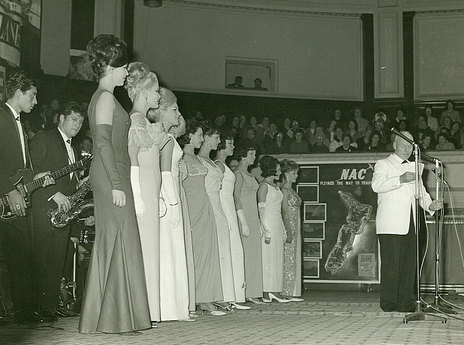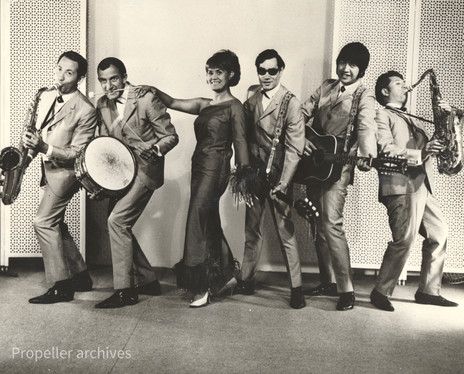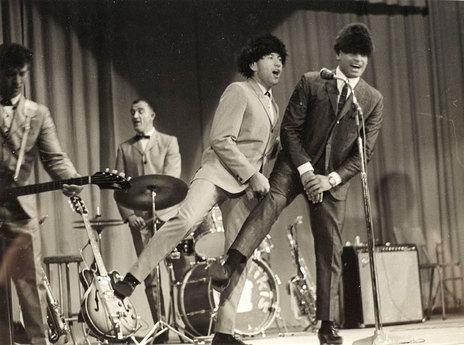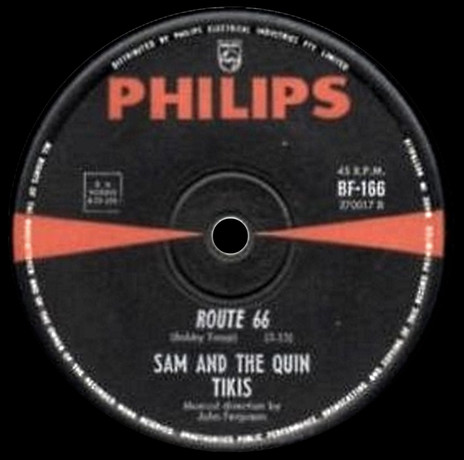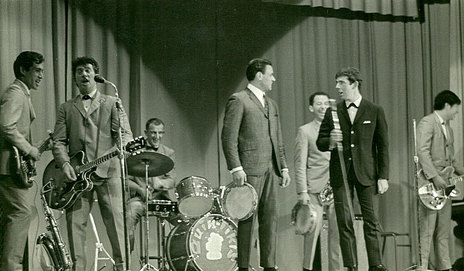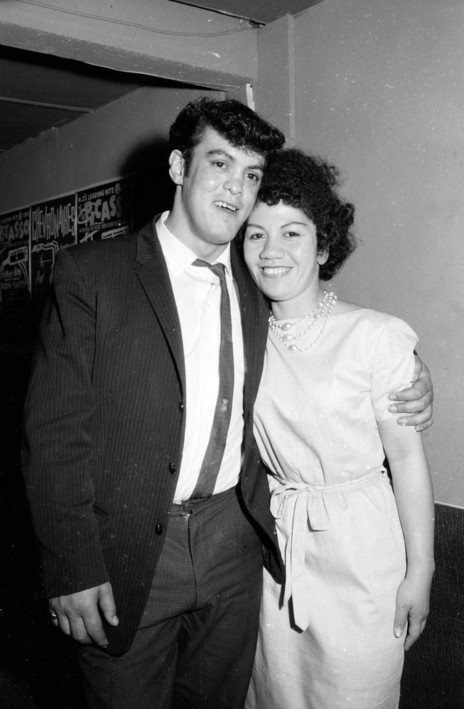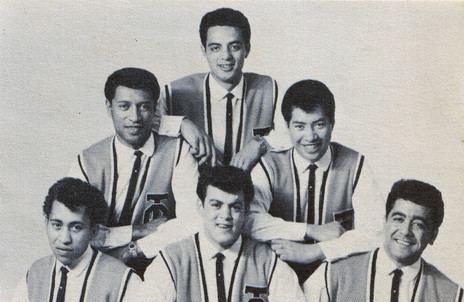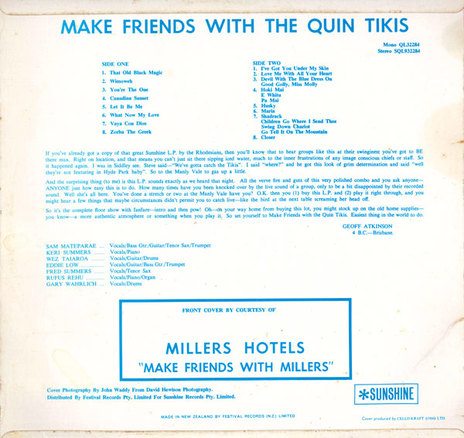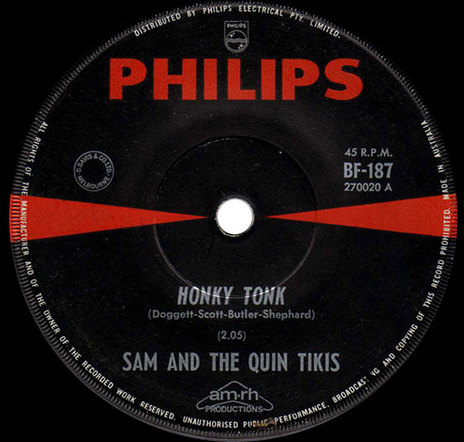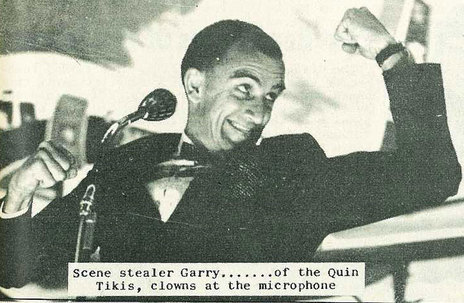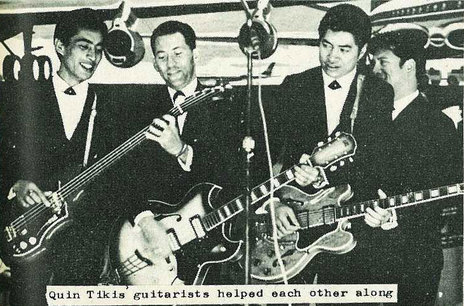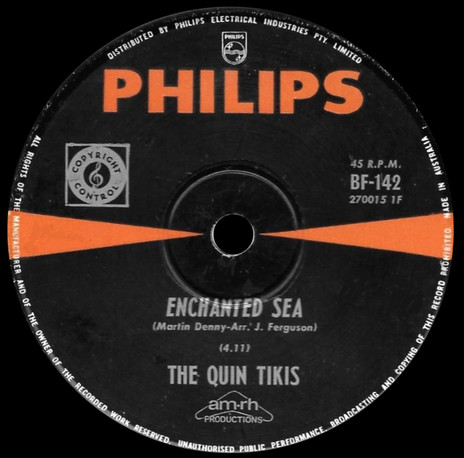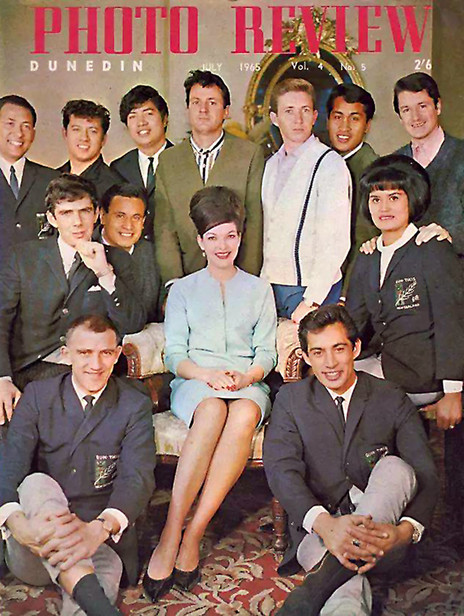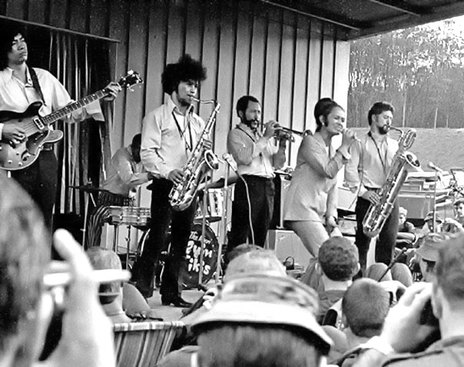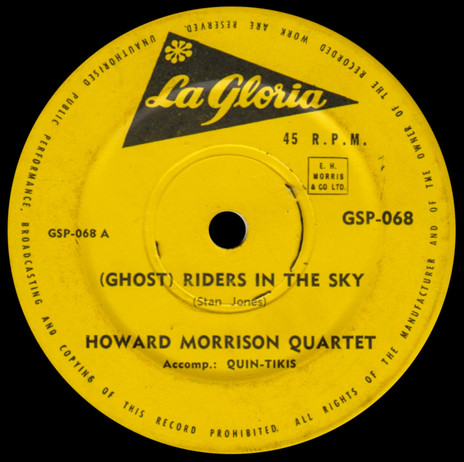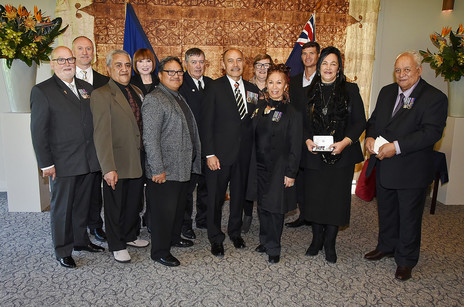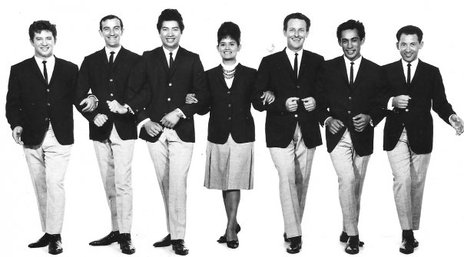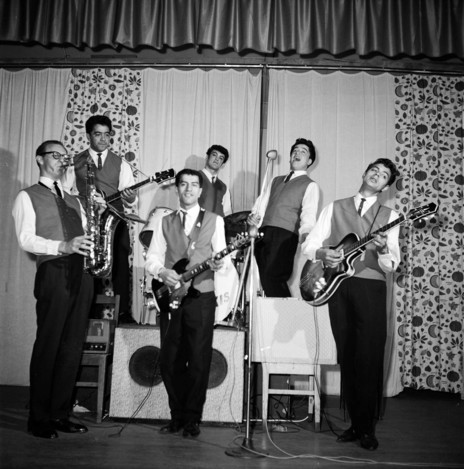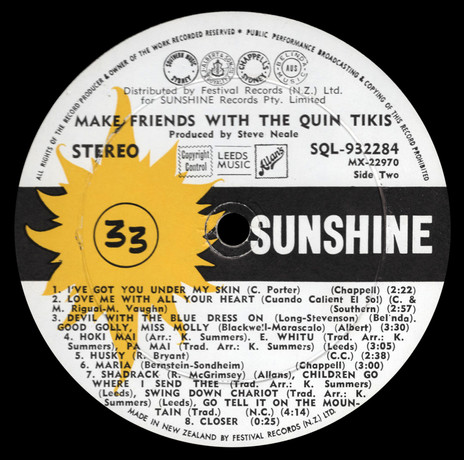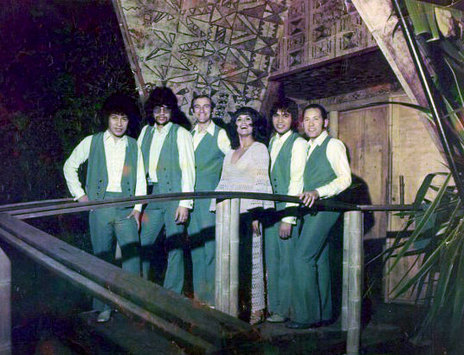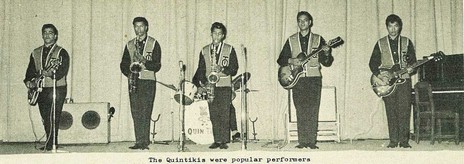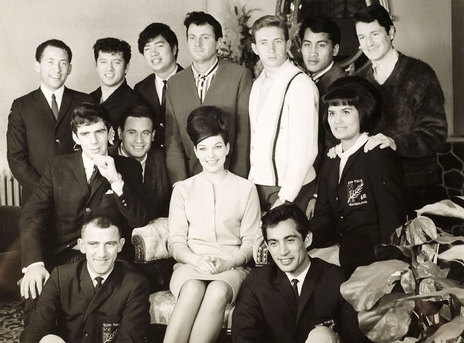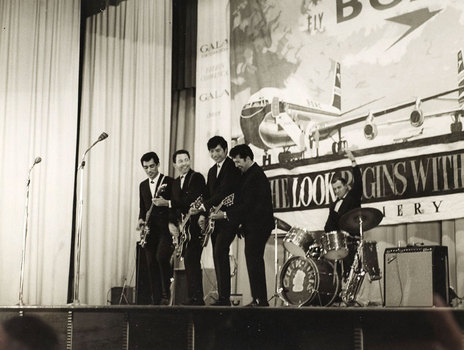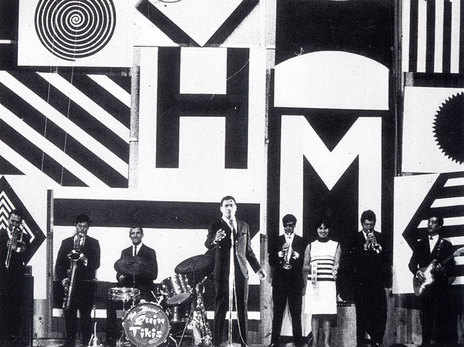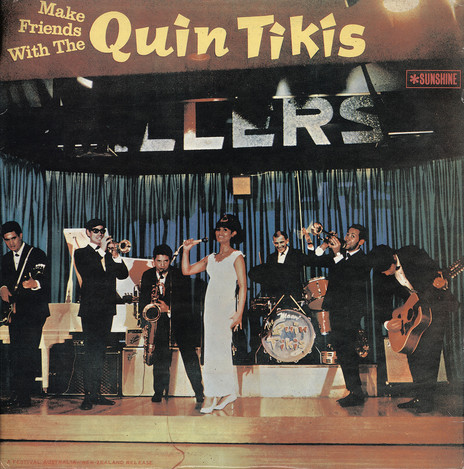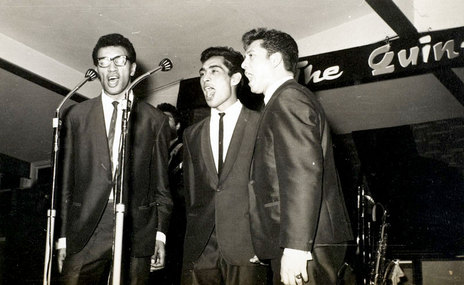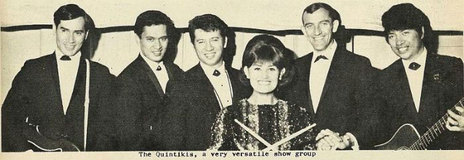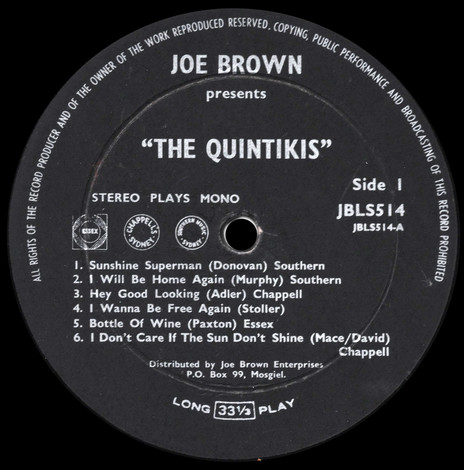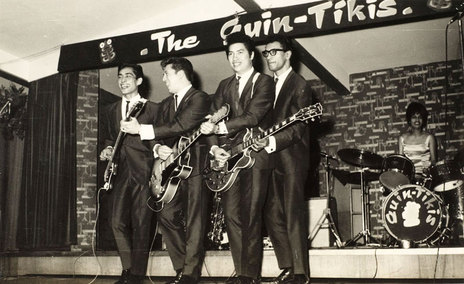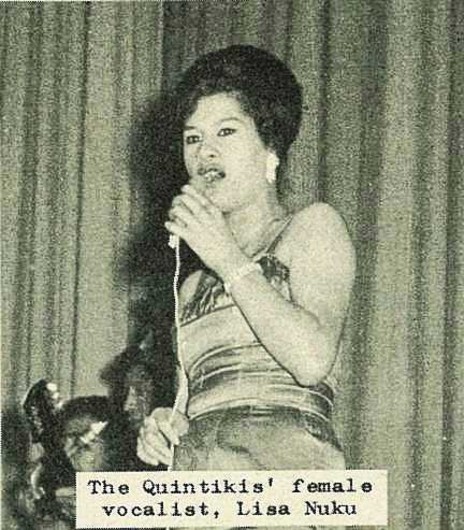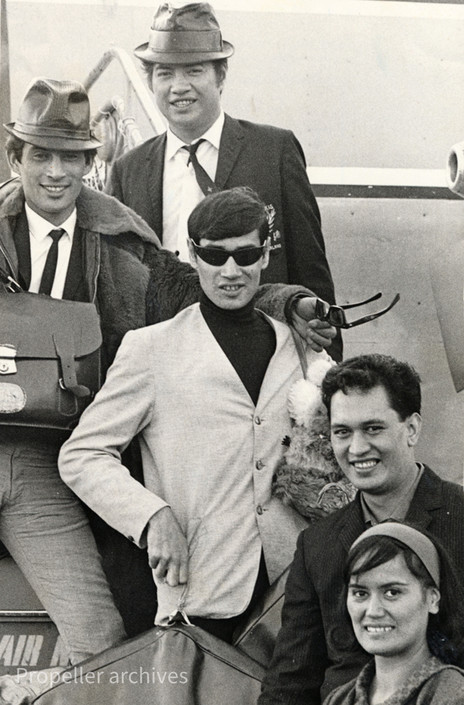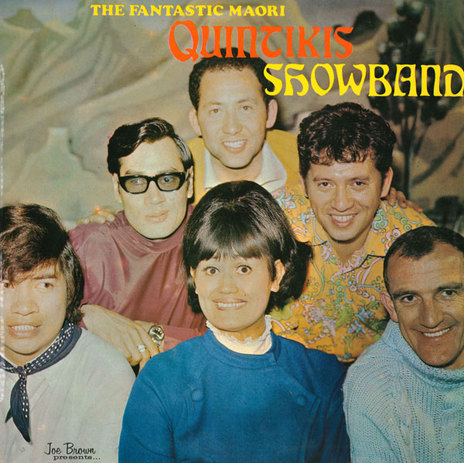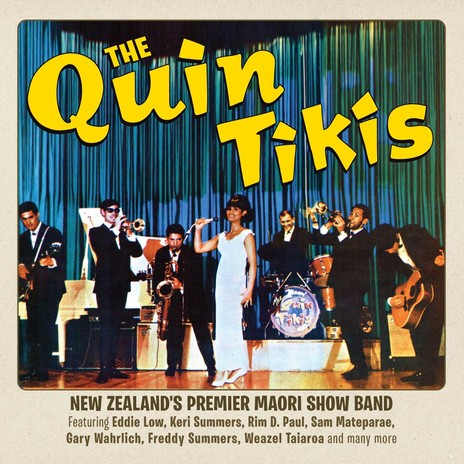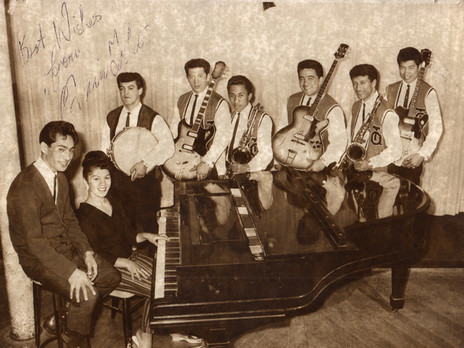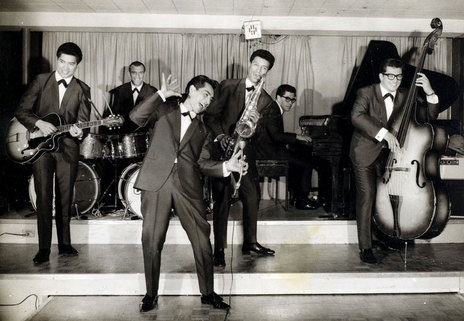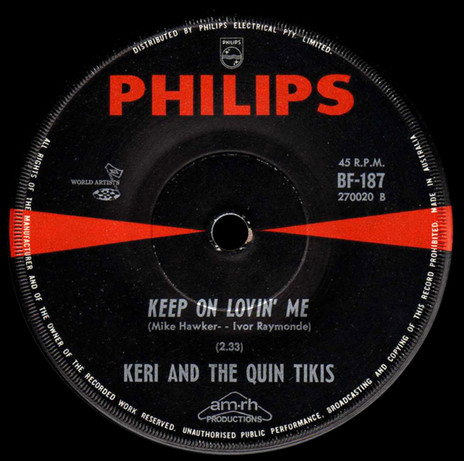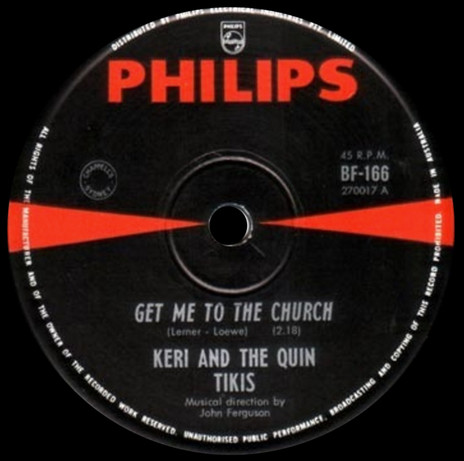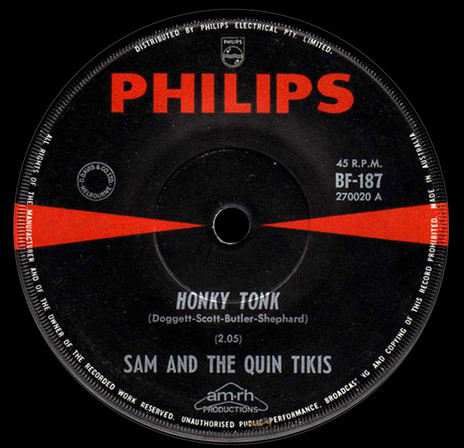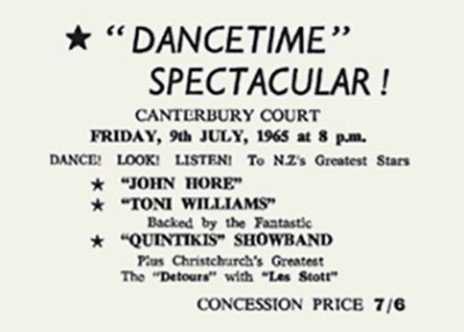As the Quin Tikis sought broader opportunities, Gugi Waaka, Bill Rawhiti, John Cameron, and Marsh Cook relocated to Wellington. There, they were joined by Anzac Te Oka, Weasel Taiaroa, Rufus Rehu and Sam Mateparae. This was the first version of The Quin Tikis Māori Showband, as confirmed by Gugi Waaka in an interview with Phil Crown for the Unsung Heroes of Māori Music documentary.
Sam was still performing with his own band Sam Mateparae and The Del-Rockers, at the Mexicali in Wellington, from 1960 to 1962. He eventually made a permanent commitment to the group.
The Quin Tikis’ talent and showmanship earned them the residency at The Mexicali, a venue owned by American expat Harry Booth (in the early 90s it became site of the Wellington central library). The band dazzled audiences with footwork, instrument tricks, drum solos, and guitar antics.
Gugi Waaka talked about their beginning with Harry Booth: “That’s the beginning, yes, that’s where the idea came from to be a showband, [it] came from that man Harry Booth. We got the word from Harry that we should look at doing something showy, making us a bit different. We began to find little tricks to do on stage that would entertain the people. It was like footwork and crazy things with the instruments that no one else had ever done, drum solos, and playing a guitar with the blindfold. All the little tricks we could dream up.
“We began to find little tricks to do on stage that would entertain people” – Gugi Waaka
“We knew that we were on to something. We knew it, so we got into it real heavy. We worked six nights a week and rehearsed four days a week. It took off in Wellington with different bands starting up with the same concept. Uptown in Wellington in Cuba Street there was a dancehall called the Cubana and the band there were called the Hi-Fives. They really got into it, and they created a fantastic show themselves.”
Rim D. Paul recalls that when he first saw The Quin Tikis perform, “I saw a lot of what turned out to be what showbands have been noted for: playing each other’s guitars. The foot routines they were doing were quite intricate. They weren’t just doing the Shadows-type of stick a foot out here. No, they had a little twist to it all. And from there a whole lot of other groups sort of started imitating what the Quin Tikis did.”
In 1962 The Quin Tikis were on the bill of Kerridge Odeon and Harry M. Miller’s Showtime Spectacular New Zealand Tour, along with Antoni Williams, Howard Morrison Quartet, The Keil Isles, Stan Wineera, Jill Thomas, The Muracs, and John Broadway.
During the Miss New Zealand Tour in September 1962, Australian promoter Des Cussins caught The Quin Tikis’ performance and invited Rufus Rehu to join a group of musicians he was putting together for a venue in Sydney. Toko Pompey, who had previously played with Rufus in The Crescendos at the Māori Community Centre in 1956-57, also joined the newly formed Sydney-based group, which became known as the Māori Premiers. The other members were Lou Graham, Charlie Smith, Ronnie Cooper and Ian Mckay.
Around the same time, Gugi decided to leave The Quin Tikis and join his brother Nuki and wife Mahora in Sydney, where they formed the Polynesian Trio and performed at various venues across Australia’s Showground Circuit. They later formed the Māori Volcanics in Sydney with Matti Kemp, Gimmick and Hector Epae.
Lisa Nuku, previously a vocalist with The Crescendos at the Māori Community Centre, performed with the group for a time and recorded the song ‘Naturally’ with them. It was released as a 45rpm single on Harry M. Miller’s La Gloria label.
In January 1963, promoter Harry M. Miller introduced US performer Chubby Checker to The Quin Tikis, recommending them as his backing band. Checker – famous for his hit version of ‘The Twist’ – visited the Māori Community Centre in Auckland to see them perform and was blown away.
In 1963 Harry Miller recommended Chubby Checker hire the quin tikis as his backing band
Keri Summers (Northover) vividly remembers The Quin Tikis supporting Chubby Checker in New Zealand. “They were already famous,” she says. “They were all over New Zealand – from the tip of the North Island to the south and east and west. I never got a chance to see them until Chubby Checker came into the country. The Twist was the hot dance craze at the time, and the Quin Tikis were chosen to back him up. Well, we all went to see The Quin Tikis, not Chubby Checker.”
The Quin Tikis became immensely popular and influential in the New Zealand music scene. They toured the country annually as part of the Miss New Zealand Tours and Joe Brown’s Country & Western Stage Show. They frequently shared the stage with the Howard Morrison Quartet and embarked on tours across the South Pacific.
When Rim D. Paul returned to New Zealand in 1963, having been let go by Charles Mather, the manager of the Hi Quins, he was offered the opportunity to sing two songs with The Quin Tikis for the John O’Shea film Runaway. These were released as singles by Stebbing on their Zodiac label. The first single was ‘Poi Poi Twist’, written by Jay Epae – Hec’s brother – and its B-side was the Jerome Kern standard ‘Ol’ Man River’. The second single ‘Runaway’ – by New Zealand composer Robin Maconie – was the film’s theme song. Its B-side was an instrumental by The Quin Tikis titled ‘Theme from The Inspector’. (It was common practice to credit the lead singer on singles, as seen in other releases like ‘Route 66’ by Sam and The Quin Tikis, ‘Get Me To The Church’ by Keri & The Quin Tikis, and the earlier recording ‘Naturally’ by Lisa Nuku and The Quin Tikis. The Quin Tikis were recognised as artists, not a backing band.)
In March 1964, the group decided to move to Sydney, although Bill Rawhiti chose to remain in New Zealand with his family. The Quin Tikis lineup was then Sam Mateparae (multi-instrumentalist/vocalist and band leader), Weasel Taiaroa (guitar/vocals), Anzac Te Oka (sax/vocals), and Rim D. Paul (bass/vocals). In Sydney, they welcomed Gary Wahrlich (Hi Quins) on drums and Dora Amahou on vocals. John Ferguson or Tab Paenga (Hi Quins) held down the piano seat, and John “Gimmick” Cameron eventually joined the Māori Volcanics. Their performances included gigs at the Rex & Sundown Hotels and a late-night slot at Tiki Village in Kings Cross—a venue named after the group. Les Masliah of Showgroup Management managed their affairs.
In March 1964, the quin tikis decided to move to Sydney
After The Quin Tikis arrived in Sydney, Anzac Te Oka was lured into joining the Māori Premiers. This dynamic group was making waves, performing at top-notch venues and backing international acts at Chequers Nightclub. Fronting the group was South African recording artist Inez Amaya, who was making regular TV appearances on Bandstand. For Anzac, the opportunity to compose and record his original music ‘Wildfire’, on the B-side of Inez Amaya’s single release, ‘The Eagle and Me’ (Polydor International), held immense promise for the direction he wanted to go in his career.
As 1964 drew to a close, Rufus received an invitation from his brother-in-law, Sam Mateparae, to rejoin The Quin Tikis. The following year, Fred Summers (Whittaker) joined the group, and Keri Northover stepped in to replace Dora Amahou.
When Keri was 19, and working as a secretary for an insurance company in Hamilton, promoter Harry M. Miller invited her to join The Māori Esquires in Australia. Despite knowing just one song by Patsy Cline, Harry was supportive and allowed her to sing it repeatedly until she mastered new material.
Keri left New Zealand on 25 June 1963, but her initial months were tough due to shyness. She earned a modest wage, only to have the manager disappear with the money. “In 1965, at 21, I joined the hottest show band in New Zealand,” she recalls. Weasel extended a personal invitation for her to join The Quin Tikis. The group needed a Māori female vocalist who could perform the popular Māori songs in their repertoire. Keri felt both honoured and terrified.
This was the same band she had admired while watching them perform alongside Chubby Checker two years earlier. They were a multi-talented ensemble, playing various instruments, executing lively dance routines, comedic acts, and even the haka. As the country’s leading showband, they presented a formidable challenge for the initially shy Keri. Rim stepped in, teaching her bass guitar as he wanted to get out front more – a move that helped her conquer fears and find her groove. Weasel’s knack for selecting songs suited to her vocal abilities further eased her transition.
Following her marriage to Fred Summers, the frontman of The Quin Tikis, Keri found performing more comfortable. Fred, whose birth name was William Frederick Whittaker, helped her connect with the audience. She adopted the stage name “Summers” as her public identity, and after each show, she would unwind by doing macramé. She recalls their time together as good years but eventually the demands of show business strained their marriage, and they separated but continued collaborating within the group.
In the 1966 film Don’t Let It Get You, Eddie Low – dubbed “The Voice In A Million” – joined The Quin Tikis alongside Howard Morrison and Gary Wallace (Gary Wahrlich’s stage name). Eddie’s remarkable abilities extended beyond vocals; he played an impressive range of instruments, including piano, trumpet, flute, various brass instruments, guitar, string bass, violin, and piano accordion. His versatility was even more remarkable given that he was partially blind. His joining the group would elevate them even further. After wrapping up the movie, Rim would leave the group to pursue a solo career in Sydney.
in 1967 the Quin Tikis released their debut album, ‘Make Friends With The Quin Tikis’
1967 was a busy time for The Quin Tikis. They released their debut album, Make Friends With The Quin Tikis, through Sunshine Records. They also took part in the Miss New Zealand Tour and performed on the Miller circuit across Sydney and the Pacific. By the year’s end, Rufus decided to pack up his young family and move back to New Zealand. Once there, he was invited to join The Quincy Conserve.
For The Quin Tikis, the momentum continued in 1968 touring with Joe Brown’s Country and Western NZ Show and the Miss New Zealand Tour, releasing a second album, The Fantastic Māori Quin Tikis Showband, on the Joe Brown label. Keri also released a solo album, Keri Summers Sings, with Joe Brown, and Weasel released a solo guitar instrumental album through Sunshine Records, Guitars Olé featuring Wez Taiaroa.
By 1969, Eddie Low struck out on his own and, thanks to the support of promoter Joe Brown, the beginning of his solo career took flight.
The Quin Tikis’ journey took them to Vietnam for tours from 1969-1970. They entertained US and Anzac forces, facing enemy fire amidst the action. Notably, in Thailand, they performed at the swanky Bunny Club, rubbing shoulders with legends such as Bob Hope. Keri found performing for the soldiers profoundly moving: their joy brought tears to her eyes. The group’s one-hour shows often stretched into two-and-a-half-hour marathons, fuelled by passion. She would describe it as the highlight of her music career.
Nearly 50 years later, on 20 July 2016, Sam’s eldest son David accepted medals on his behalf, for Sam’s service in Vietnam. They were presented to him by his uncle New Zealand’s Governor General, Lt Gen Sir Jerry Mateparae: Sam’s younger brother. Gary Wahrlich’s daughter accepted his medal on his behalf. The rest of the group are yet to receive their medals.
After their tour of Vietnam, the group was offered a contract in Las Vegas. Sam decided he needed to stay in Sydney to spend more time with his young family.
In Las Vegas, the quin Tikis’ show blended Broadway, cabaret and Māori waiata
The Quin Tikis’ opening night at The Flamingo Hilton in Vegas was another highlight of Keri’s time with the group. Their show blended Broadway, cabaret and Māori waiata. On that memorable night, although everyone fumbled the Māori stick game routine, it didn’t dampen their acceptance. Also on the bill were Rusty Warren and Wayne Cochran and the C.C. Riders. Soon The Quin Tikis were touring between Las Vegas, New Orleans, and Toronto, playing month-long gigs in each city.
In 1974, Kevin Rongonui and Phil Rivers parted ways with their agent. When their visas weren’t renewed during the Toronto leg of the circuit, the group disbanded. Gary Wahrlich went on to join a country band, Fred Summers became a top US booking agent, and Weasel and Keri formed a new version of The Quin Tikis, although it never quite matched the magic of the 1960s original.
Weasel began a successful solo career as a multi-instrumentalist/singer, during which a highlight was touring with Charlie Pride as one of The Pridesmen. He became a masterful fiddle player; he had started playing as a teenager with the show band The Chevronaires, whose repertoire included a lot of Louis Prima and Keely Smith-style material. They went to Australia and worked on the Gold Coast for a time, and then left for the US. But Weasel became homesick and returned to New Zealand where Gugi asked him to join The Quin Tikis. Keri started her own antique business while still doing local gigs.
Some of the original band members reunited in New Zealand in the 1990s for a Quin Tikis reunion show and again in 2010 for a Crown Productions Show Extravaganza at the North Shore Events Centre, Auckland, featuring performances from the Hi Fives, Māori Volcanics and Quin Tikis.
The Quin Tikis achieved so much in their decade together, each contributing in their own way to the group’s overall success and legacy. The group definitely earned its reputation – and billing – as “New Zealand’s Premier Māori Showband”.
